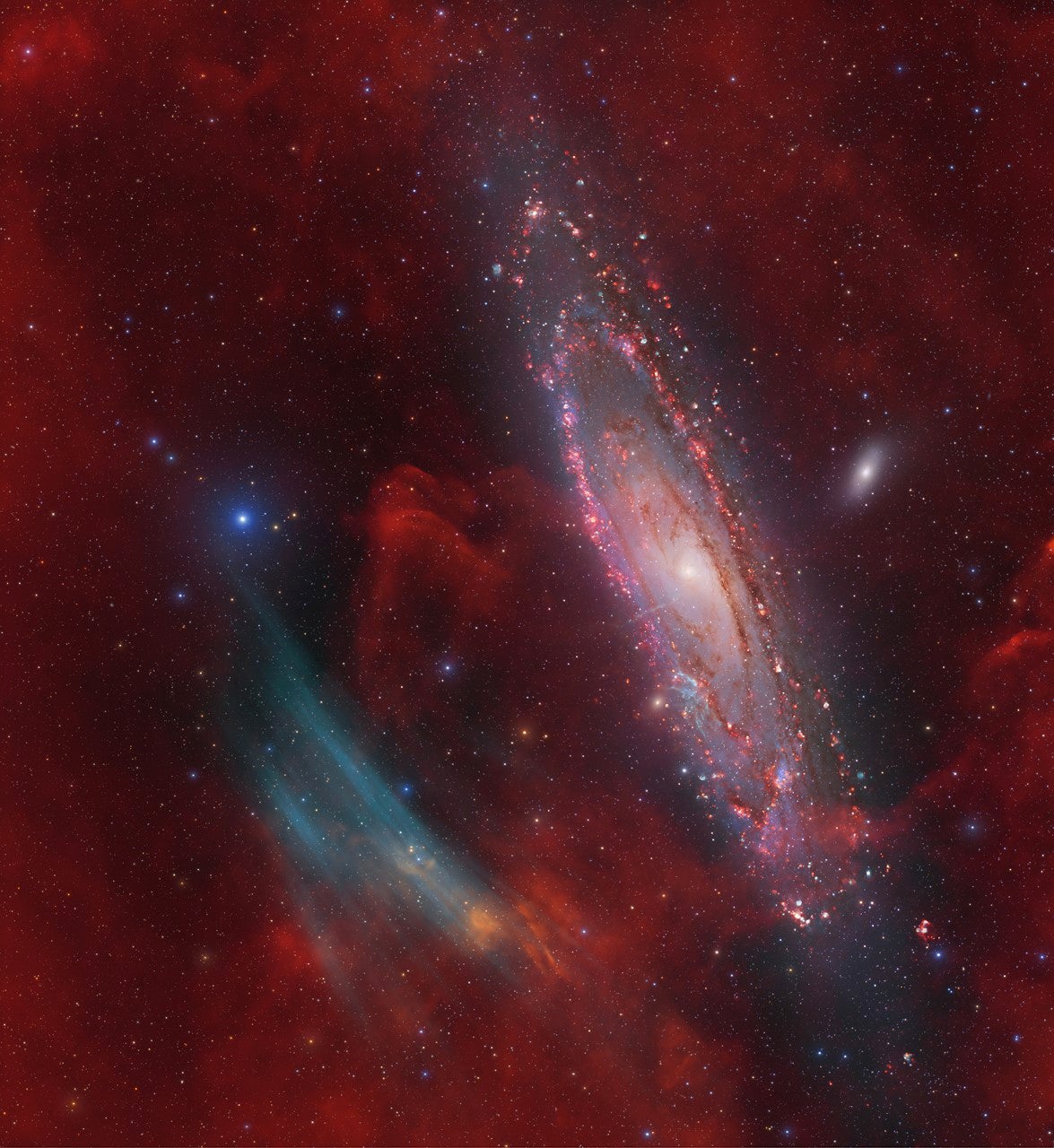Science
Related: About this forumA Recently Discovered Gas Cloud Near Andromeda Stumps Astronomers
Clues to the origin of this enormous cloud of gas have been maddeningly vague
By Phil Plait on January 12, 2023

Astronomers are baffled by a mysterious giant cloud of doubly ionized oxygen (blue arclike wisps at left) that was recently discovered in the sky next to the Andromeda galaxy (star-studded pink spiral at right). Credit: Marcel Drechsler/Xavier Strottner/Yann Sainty
With dozens of large telescopes scattered across Earth and some well above it, you might think we’ve pretty much discovered all there is to find in the sky. But this is, literally, too narrow a view.
The recent discovery of a huge cloud of gas floating near the Andromeda galaxy—one of the most extensively studied objects in the heavens—is the latest proof that the sky still offers a vast amount of celestial real estate to sift through. This cloud has been hiding in plain sight for decades. And the best part is that its origin is a mystery.
The advent of inexpensive but very high-quality digital detectors has made astronomical photography easier than ever before. This has sparked a new trend among astronomy enthusiasts to focus on one select area of the sky and take what are effectively very long exposures in the hopes of finding whatever faint fuzzies might lie there.
Amateur astronomers and researchers Marcel Drechsler and Xavier Strottner decided to take advantage of these recent technological improvements. They wanted to scan parts of the sky looking for faint nebulae—gas clouds—so they brought in Yann Sainty, a French amateur astronomer and astrophotographer. Sainty decided to target Andromeda, a large spiral galaxy much like our own Milky Way that’s just 2.5 million light-years away. Its proximity, cosmically speaking, has made Andromeda a juicy target for astronomers for more than a century. With its most obvious riches mapped, astronomers had generally assumed anything left to discover there would be small, individual objects such as nebulae inside the galaxy itself.
Sainty sent his observations to Drechsler and Strottner for processing and analysis. And while poring over the images, they found something that defied expectations: a huge extended structure appearing almost as big as Andromeda itself and right next to it. The nebula only materialized when Sainty obtained images with a filter that blocks all light except for the blue-green glow emitted by doubly ionized oxygen—that is, oxygen atoms that have lost two of their outer electrons, a common occurrence in giant gas clouds. It was essentially human curiosity that drove the use of this filter; no very deep large-scale maps of the sky around Andromeda had ever been made before.
More:
https://www.scientificamerican.com/article/a-recently-discovered-gas-cloud-near-andromeda-stumps-astronomers/
BWdem4life
(1,681 posts)This is a scientific article?
mike_c
(36,281 posts)I especially liked the characterization of the OIII arc as "near" Andromeda.
Duppers
(28,125 posts)It's scientifically accurate but geared more to the public - the publication wants to make money. It's more "introductory physics."
(My speed, not my PhD hubby's.)